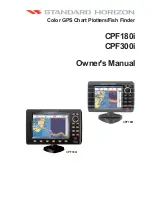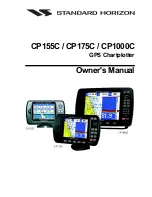
76
GPSMAP 700 Series Owner’s Manual
Sonar
Showing and Configuring the Whiteline
You can highlight the strongest signal from the bottom to help define the hardness or softness of the signal.
1. From the Home screen, select
Sonar
>
Sonar Setup
>
Whiteline
.
2. Complete an action:
• Select
High
to turn on the whiteline with the most-sensitive setting. Almost all strong returns are
highlighted in white.
• Select
Medium
to turn on the whiteline with many strong returns highlighted in white.
• Select
Low
to turn on the whiteline with the least-sensitive setting. Only the strongest returns are
highlighted in white.
Setting the Color Scheme
1. From the Home screen, select
Sonar
>
Sonar Setup
.
2. Complete an action:
• Select
Color Scheme
>
Blue
.
• Select
Color Scheme
>
White
.
Adjusting the Gain on the Sonar Screen
You can control the sensitivity of the sonar receiver. To see more detail, increase the gain. If the screen is
cluttered, decrease the gain.
1. From the Home screen, select
Sonar
.
2. Select a sonar view.
3. Select
Menu
>
Gain
.
4. Complete an action:
• Select
Auto
to allow the chartplotter to adjust the gain automatically.
• Select
Up
or
Down
to increase or decrease the gain manually.
5. Select
Done
.
Adjusting the Noise Rejection on the Sonar Screen
The Noise Rejection setting appears only when you have manually increased or decreased the gain setting
).
You can minimize the appearance of weak sonar returns by increasing the noise rejection.
1. From the Home screen, select
Sonar
.
2. Select a sonar view.
3. Select
Menu
>
Noise Reject
.
4. Select
Up
or
Down
.
Selecting Frequencies
You can indicate which frequencies appear on the sonar screen when using a dual frequency transducer.
You can show data from a 200 kHz sonar signal, data from a 50 kHz sonar signal, or data from both signals
simultaneously.
1. From the Home screen, select
Sonar
.
2. Select a sonar view.
3. Select
Menu
>
Frequency
.
4. Complete an action:
• Select
200 kHz
to show data from a 200 kHz sonar signal. This is useful mainly for more-shallow,
inland waters.
• Select
50 kHz
to show data from a 50 kHz sonar signal. This is useful mainly for deeper waters.
• Select
Dual
to show both 200 kHz and 50 kHz data on a split screen.





































